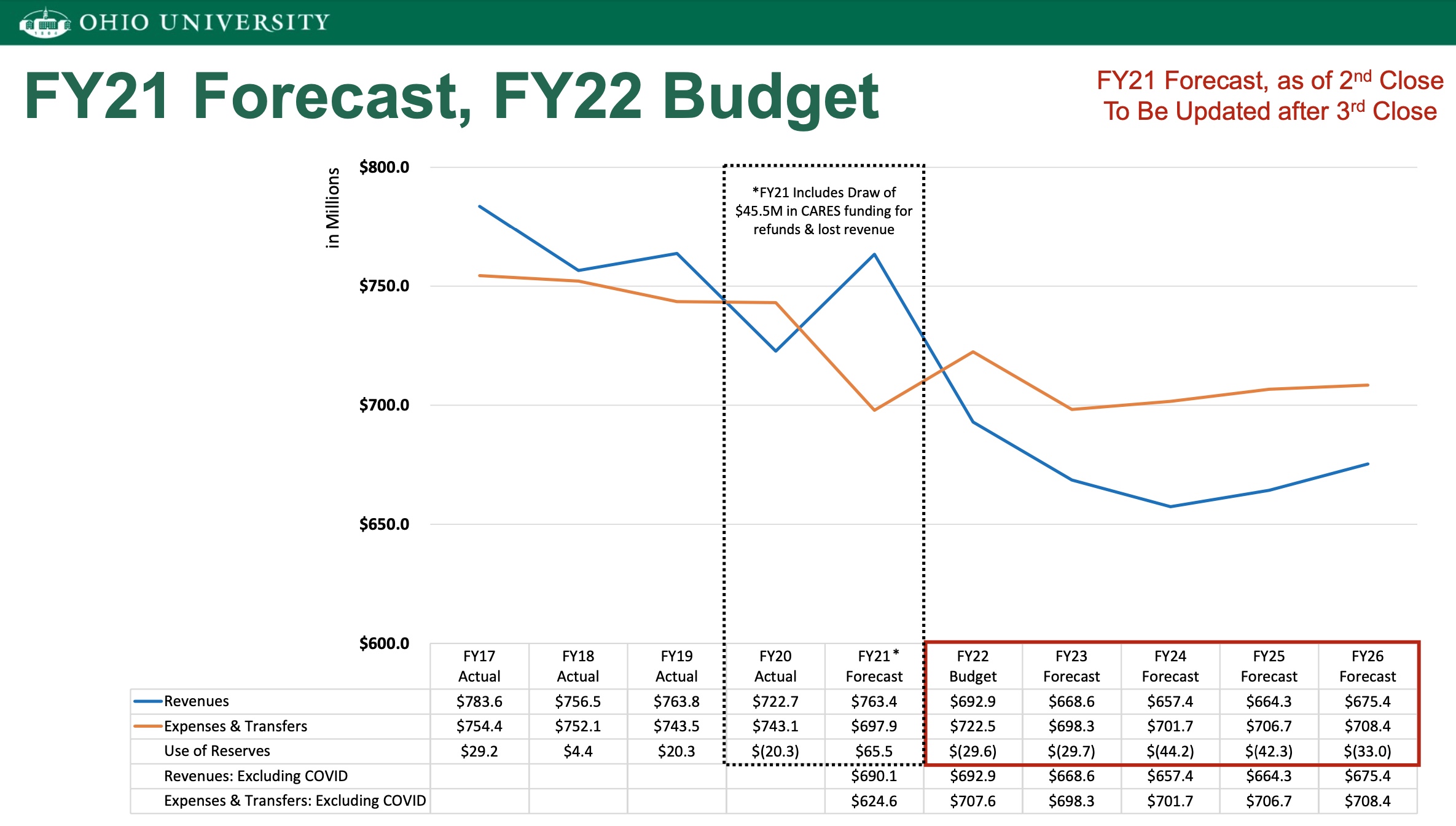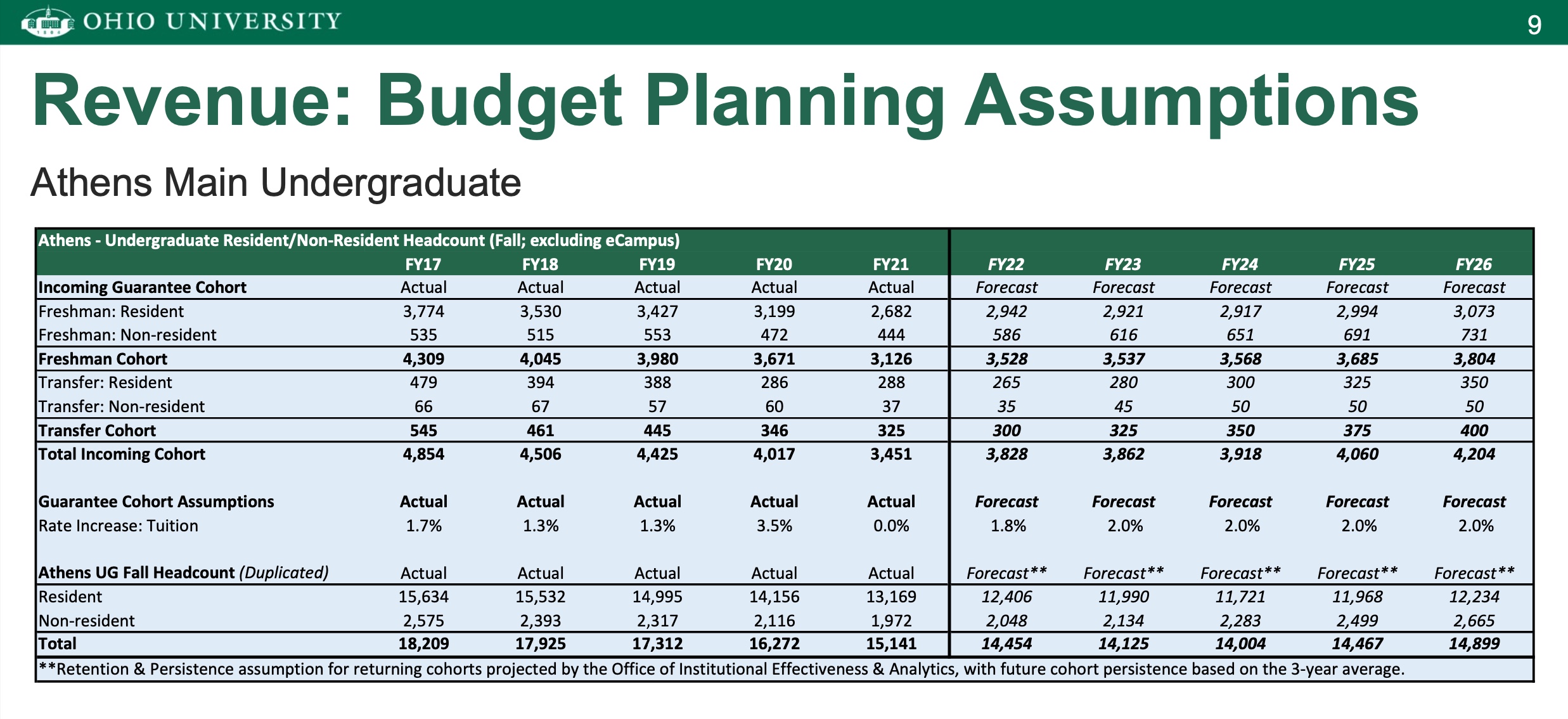News
Ohio University Recovering From Pandemic, But Big Challenges Remain
By: David Forster
Posted on:
ATHENS, Ohio (WOUB) — Ohio University’s board of trustees saw evidence Friday that the university is recovering from the depths of the pandemic.
Freshmen enrollment is expected to be up significantly from last year’s incoming class, which was one of the smallest in nearly three decades.
And the projected budget deficits are not as massive as they were a year ago.
But the growth will be slow and the university still has a long way to go to bring expenses and revenue into alignment.
“We do still have to make difficult decisions,” said Deb Shaffer, who made her final budget presentation to the board as the university’s senior vice president for finance and administration. She announced her retirement in June.

Meanwhile, given the increasingly competitive marketplace for students, the university plans to offer a lot more in financial aid to get those students to attend. This is a direct hit on revenue because the scholarships are really just a discount off the tuition price.
In the 2016-17 school year, when enrollment peaked, the university awarded $54.7 million in scholarships. It’s projecting $70.5 million in scholarships for this school year and $89.4 million four years from now.
The result is that even if freshmen enrollment rises as expected over the coming years, net tuition revenue is projected to decline for at least the next couple of years.
Tuition, together with room and board, represent the university’s largest source of revenue, at just over 50 percent. So changes in enrollment and net tuition revenue have a significant impact on the bottom line.
And the bottom line remains a problem. The projected budget deficit for this fiscal year, which began in July and ends in June, is nearly $30 million. A $30 million deficit is also projected for the next fiscal year. It’s expected to jump to $44 million the year after that, followed by a slight decline.
These deficit projections assume that no steps are taken to increase revenue or cut expenses.
The university is working on both.

This outreach seems to be paying off. The university is expecting 586 nonresident incoming freshmen this year, which is significantly higher than in years past. And it’s projecting this number will grow steadily, to well over 700 four years from now. Of course, other universities also are competing aggressively for these same students.
Gains in enrollment also translate into more funding from the state, but it will take a while for that to materialize.
Each university’s share of state funding for higher education is determined by a formula based heavily on course and degree completions. So there is a lag time of several years between bumps in enrollment and corresponding increases in state funding, and as a result the university projects a decline in its share of state funding over the next several years.
Because the funding formula is so dependent on student success, it’s critical not only that the university brings in more freshmen but that it keeps them here until graduation. University leaders presented to the board a new advising program that will track student performance more closely and provide more intervention for those falling off track.
The university also plans to raise tuition 2 percent a year for at least the next four years. This assumes the state Legislature, which sets caps on tuition increases, doesn’t impose stricter limits, which it has done in years past. Plus, Ohio University’s tuition is already among the highest in the state, so there are practical limits on how much it can raise tuition without affecting enrollment.
On the expense side, the university’s largest cost is wages and benefits. It has already saved millions of dollars by holding the line on raises and not filling hundreds of vacant positions around campus. No raises are planned this fiscal year or next, but a 1 percent raise is budgeted for fiscal year 2024.
University leaders also presented the board with many examples where they have been able to wring millions of dollars in savings out of various operations that don’t involve personnel. But it remains to be seen whether the university’s structural deficit can be closed without cutting more deeply into staff.

